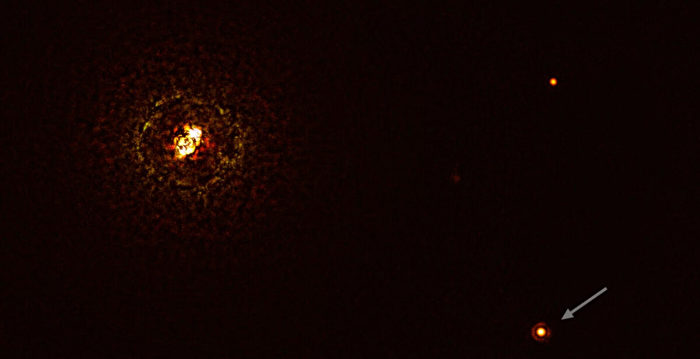[Epoch Times December 11, 2021](Reported by English Epoch Times reporter Katabella Roberts / compiled by Takasugi) A group of astronomers have discovered the largest planet known to date, which is orbiting a huge and extremely hot binary star system . Although they previously believed that such an environment is very unsuitable for the formation of planets.
According to a study published in the scientific journal Nature on Wednesday (December 8), this planet was created by Markus Janson, professor of astronomy at Stockholm University, and His colleagues found out.
Jensen and his colleagues used the very complex and advanced Spectro-Polarimetric High-contrast Exoplanet REsearch instrument on the European Southern Observatory’s Very Large Telescope in Chile. SPHERE for short) discovered this planet.
Astronomers said in a press release: This planet is named “b Centauri (AB)b” or “b Centauri b”. Different environments”.
The astronomer explained: “Its mass is 10 times that of Jupiter and is one of the largest planets discovered so far. In addition, the radius of its rotation around this binary system is 100 times the distance from Jupiter to the sun. This is so far. One of the widest orbits ever discovered.” “So far from the central binary star may be the key to the survival of this planet.”
Jensen said that being able to find this planet around this binary star system completely changed astronomers’ previous view of massive stars bearing planets. And showed that, in fact, planets can indeed form in such a harsh star system.
This binary star system composed of two stars is also named “b Centauri”. It has a history of 15 million years and is at least 6 times the mass of the sun. It is the largest star system ever discovered by astronomers. Due to its incredibly high temperature, this star system in the Centaurus galaxy 325 light-years away emits a lot of ultraviolet and X-rays.
Before the discovery of this star, scientists had been unable to find any such celestial bodies around a star three times the mass of the sun.
The huge mass of the star system and the heat it releases have a strong impact on the surrounding gas, and technically speaking, it should make it difficult for planets to form.
Jensen said: “B-type stars are generally considered to be extremely destructive and dangerous environments, so people think it is extremely difficult to form large planets around them.”
The MPIA scientist and the co-author of the study, Matthias Samland, said: “As for the question of what a planetary system “should” look like, we have always used a completely solar system-centric view. Look. In the past 10 years, many planetary systems with surprising and novel structures have been discovered, which allows us to broaden our previous narrow vision. This new discovery adds another exciting chapter to this story. This time it’s about massive stars.”
The instrument that helped scientists discover this planet-SPHERE was jointly built by several astronomical institutions. So far, astronomers have used it to capture many planets orbiting stars other than the sun.
With this instrument, they also captured images of a growing baby planet and a disk that may become the moon for the first time.
Regarding this newly discovered planet, Jensen added: “Trying to figure out how it might have formed will be a very interesting task, which is still a mystery at the moment.”
Editor in charge: Ye Ziwei#
.
